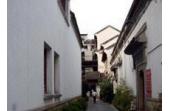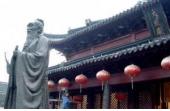Overview
The tomb is 12 meters deep, with a path, 33 meters in length and
1,4 meters in width, descending to the tomb chamber. The
chamber was built with brick, containing two separate parts: the
front and rear parts. The walls of the front part and the ceiling
are decorated with colorful paintings. The content of these
paintings are loyal figures, loyal life, farming and hunting
activities, flowers, birds and animals. The paintings in the rear
chamber contain subjects of arrows and silk.
Although these murals were made over thousands of years ago, there
are well-preserved in the original condition when it first
discovered in 1970s, thanks to the dry weather condition in the
area.
Features
The Mural Paintings of Eastern Jin Dynasty are found inside a tomb
of Eastern Jin Dynasty ( 220-420), 42 kilometers to the northwest
of the city, on the Gobi desert.
Transportation
Take the Jiuquan to Jiayuguan public bus at Xiguan Bus Station and
get off at the Silk Road Museum.











